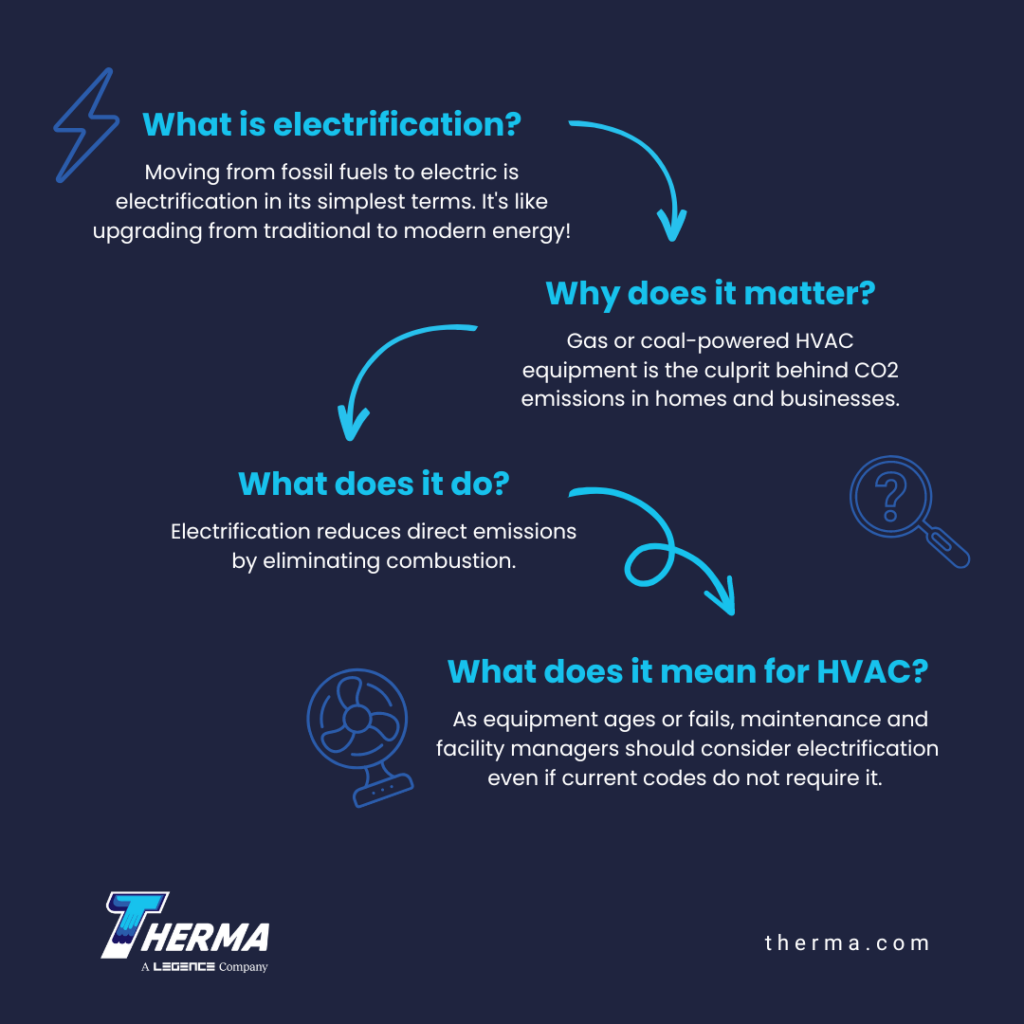by Patti Dees
Commercial electrification is one of the latest strategies to combat CO2 emissions. By converting fossil-fuel-based heating and cooking systems to electric, commercial consumers improve their energy efficiency and cut out a source of direct CO2 emissions from combustion.
What is electrification?
In simplest terms, electrification means moving from fossil fuels to electric. Its goal is to reduce CO2 emissions from combustion-driven equipment and the strategy applies to everything from cars to heating and cooling systems. It is a global strategy being used to reach climate goals.
Given the impact the movement has on the power grid as well as individuals, some organizations prefer the concept of beneficial electrification. Beneficial electrification recognizes that not all parts of the world are prepared for a significant increase in electricity demand and that upgrading and replacing equipment costs money that not all commercial or residential consumers can afford.
Why does it matter?
According to the EPA, greenhouse gas emissions in the US come from four primary sources: transportation, electricity production, industry, and commercial/residential sectors. The commercial and residential sector is responsible for an estimated 13% of emissions. HVAC and cooking equipment that relies on gas or coal is the driving force behind CO2 emissions in this sector.
What does it do?
While electrification does not address other greenhouse gas emissions, CO2 from commercial/residential sources can be reduced by installing or upgrading equipment to more energy-efficient electrically powered technologies. This achieves two things. First, electrification reduces the direct emissions from combustion. Second, it shifts the focus to electricity production and streamlines how emissions policymaking is conducted.
Due to the drop in direct emissions, commercial electrification is usually beneficial even when power sources are not based on renewable technologies. However, in regions where power generation is not renewable, commercial electrification becomes the motivation for broader policy changes.
As the demand for electricity increases, these regions will need to expand the power grid, improve its flexibility, and add or increase renewable power generation technologies. The more utility providers expand or replace energy generation sources for sustainable technologies, the more emissions will be reduced.

What does it mean for HVAC?
As the world moves to cut greenhouse gas emissions, more building codes are limiting, and even outright banning fossil-fuel-based technologies. Without fossil fuels, the only HVAC alternative is the heat pump. The International Energy Agency (IEA) estimates that only about 10% of global HVAC systems use heat pumps. Here in the US, heat pumps are common in new installs. However, for existing buildings, electrification can pose a few challenges.
As equipment ages or fails, maintenance and facility managers have to consider both upfront and long-term costs, space limitations, and how replacement or upgrades will impact the remainder of the system.
Electric equipment tends to be more efficient than those that run on fossil fuels. Improved efficiency may save on operating and maintenance costs. Even if the upfront cost is more for electric upgrades, the long-term cost benefits can help offset the impact.
Maintenance and facility managers facing HVAC upgrades and replacements to their existing fossil-fuel-based system should consider electrification even if current codes do not require it. By choosing electric, they can improve their efficiency and meet new energy standards. Professionals at Therma can assist with space-saving design and finding the best technologies for each building’s unique requirements.
Patti draws on her background as a chemical engineer to share information with readers on technology, manufacturing, and construction.
Sources
International Energy Agency – Electrification – Energy System – IEA
Environmental Protection Agency – Sources of Greenhouse Gas Emissions | US EPA
US Green Building Council – USGBC Issue Brief #2: Beneficial Electrification








